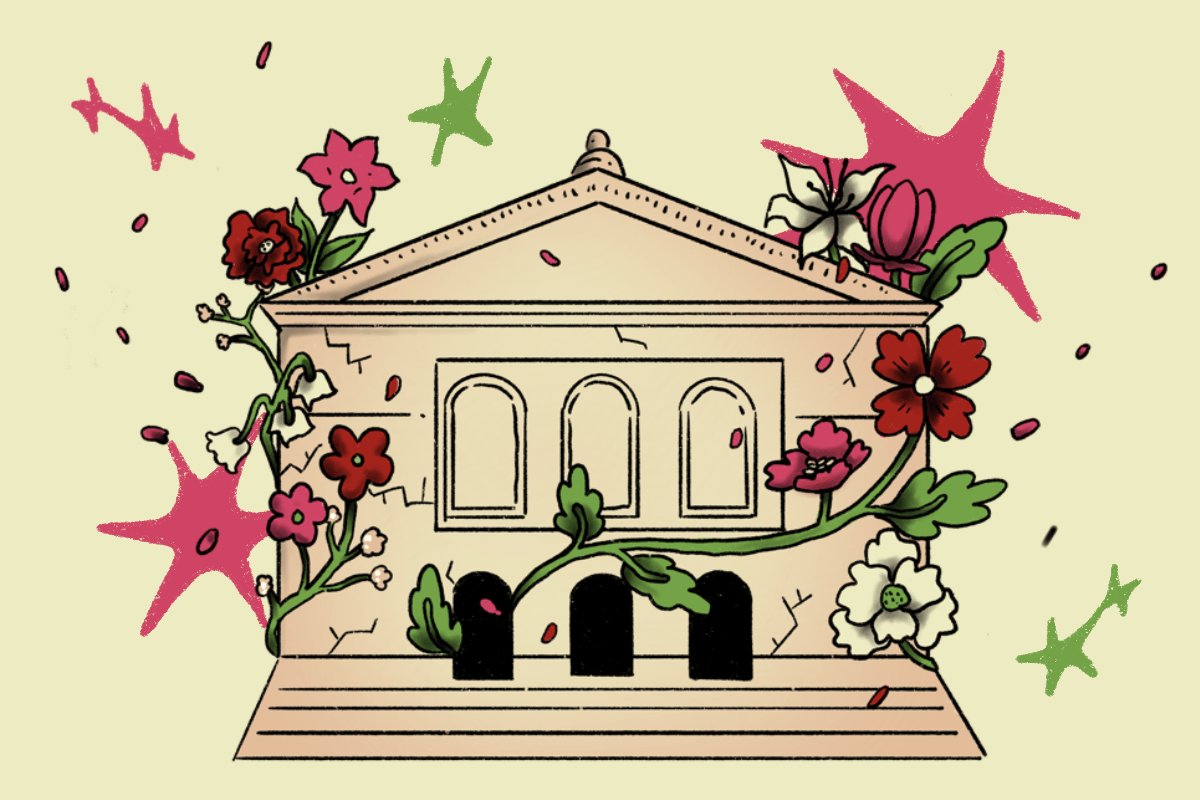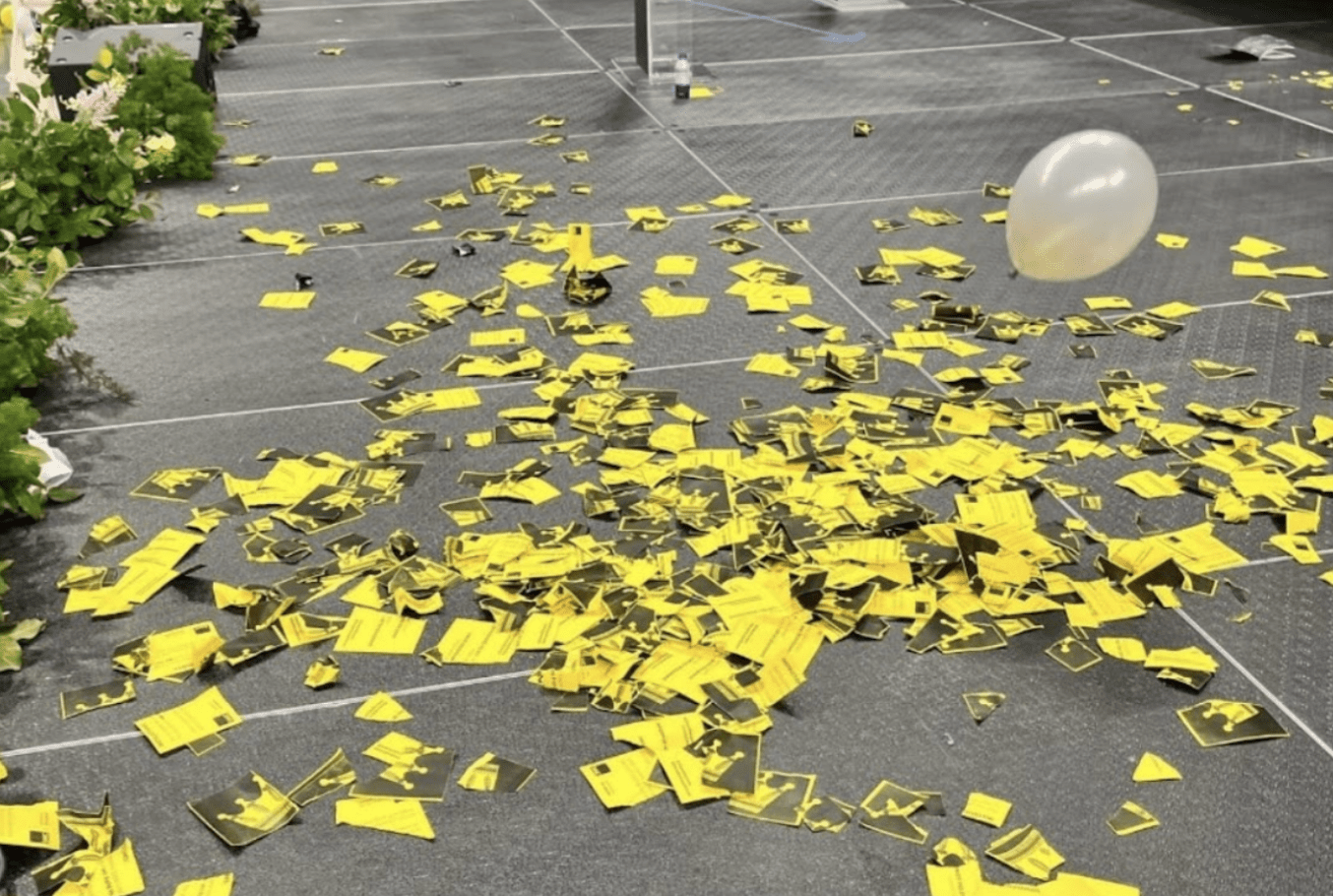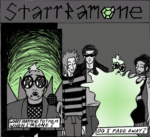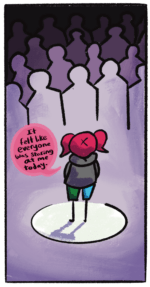The State of G2
With all the dust settled on the slew of Spring graduate shows, it only seems right to take stock of Gallery 2 as a building and as a space meant to connect student artists with the outside world. Nestled firmly in the West Loop Gallery District, G2, as it is known to most, has undergone serious transformations in the past several years, including a move, a consolidation, and an uncertain future. Sold in August 2005 to Cormony Development, a Maryland–based firm, the building was a serious investment for SAIC, and its sale could mean major changes for the atmosphere surrounding our largest exhibition space. For now, no dramatic losses are in sight, but the issue certainly deserves attention. We know Gallery 2 for its out-of-the-way location and its unfinished charm, but Gallery 2 has not always been what it is today. Just as the School has re-branded itself many times over, the concept of a “school gallery space” is a contentious and fluctuating idea, with many players and interests involved, all presumably working towards maintaining SAIC as a powerful force in Chicago’s art community.
As an urban campus, SAIC’s physical locations are subject to changes in the real estate market and decisions made by upper-level administrators. Given that, G2 can act as a sort of weather vane for both the School’s financial priorities and its standing in the Chicago arts community. Where does the integrity of the School’s standing come into play, and where can we expect the School’s largest gallery space to go in the coming years? Todd Cashbaugh, the director of Gallery 2, gave us an inside look at the gallery’s humble beginnings, its various expansions and contractions, and the future plans for SAIC’s 44,000 foot exhibition space. All quotations are his.
The history of exhibition space at the School is a long one, dotted with moves and re-namings, always under the influence of financial gain and an evolving School identity. Twenty-three years ago, in 1984, the School’s first “formal art gallery” began in a small storefront space on Superior Street, predating the Betty Rymer Gallery. As the only gallery, from 1984-1987 the “Superior Street Gallery,” as it was called, served all the needs of SAIC, and had nowhere near the amount of exhibition space offered today.
In 1987 the generically named “Gallery 2” was born, operating out of a space at 1040 West Huron Street. The location, in an upper floor of a warehouse building, was in a world far from the smoothie-infused West Loop district of today. Sandwiched between the Kennedy Expressway and Milwaukee Avenue, near the Chicago Blue Line stop, the gallery’s hardscrabble location reflected the less corporate identity of SAIC at the time. That space lasted for nearly ten years, until 1995. During this time, the Betty Rymer Gallery had opened in the Columbus Building in 1989, after a “major contribution” was made to the School by her husband, Barry Rymer, a member of the School Board of Governors.
Throughout these location changes, there was no permanent thesis exhibition space for graduating students, and there wouldn’t be until 1995. The Superior Street and Huron Street spaces were each “about the size of the current Betty Rymer Gallery,” and so were not large enough, even with a smaller SAIC student body, to host the BFA and MFA shows. Before 1995, thesis shows were a de-centralized affair, during which SAIC “leased warehouse space in different locations around the city each year” for its various thesis shows.
When the School bought The White Tower Building in 1995, it became the home of the gargantuan thesis shows, and was a major investment for the School. At ten stories tall—the tallest building within a three block radius—and with 235,000 square feet of space, the building is actually comprised of two buildings connected together. Tenants leased space from the School – at one time, the Chicago Artist’s Coalition exhibited there, and it was a prime location for the gallery district that would form on Peoria Street.
After ten years as owners of the building, in August 2005, the museum and the School sold it in its entirety to developers. The reasoning behind the sale was “to reduce annual operating costs associated with managing such a large/old structure.” Cashbaugh doesn’t know how much the building was sold, but it would be safe to assume that the Art Institute made a tidy profit, as the West Loop/Greektown neighborhood becomes increasingly gentrified along with the neighboring areas of Pilsen and the University of Illinois-Chicago Village.
With the sale of the building came a sizeable reduction in exhibition space. During the summer of 2006, Gallery 2 “was condensed to two floors as part of the lease agreement with the developer.” The School lost the very visible first floor exhibition space, which, with almost floor-to-ceiling windows, brought student art out onto the street and created a sense that G2 was like a “real gallery.” In the real world, however, Cashbaugh concedes that “the first floor is a prime retail space, and there are plans to renovate the first floor to make it attractive for retail leasing.”
What other changes are in store for our gallery? For starters, more (and different kinds) of neighbors seem to be in the cards. According to Cormony Development, their plans include, ” the renovation of the entire building, facade and mechanical systems as well as the construction of a multi–story parking structure…and the conversion of the upper floors to residential condominiums.” Cormony’s website touts that they specialize in “the development and redevelopment of challenging urban and suburban projects,” which seems perfect for the changing nature of the West Loop.
But what does this mean for Gallery 2?
Although it may at times seem as though SAIC students have the run of the building at 847 W. Jackson, there have always been tenants occupying five other floors (the 2nd, 3rd, 6th, 7th, and 9th). Cashbaugh says that currently, “the developers are actively seeking new tenants for all vacant floors–including the first floor.” What kinds of new tenants will there be? As for whether SAIC students will be sharing the elevator with young stroller-pushing parents or Chihuahua walking fashionistas any time soon, Cashbaugh adds that “condominium development has ceased for the time being, and the new owners are now focused on leasing to retail and other businesses.
With so much change in the neighborhood and within the building themselves, it seems a valid question to ask whether SAIC’s students will be (politely) pushed out of the way, making room for upscale condominiums and martini bars. Not anytime soon, says Cashbaugh. “SAIC has a 15 year lease for the 2nd and 3rd floors in the White Tower Building, and there are no immediate plans to move Gallery 2 and Project Space to another location.” Nothing, however, is guaranteed, especially with the very recent departures of Jana Wright, the Vice President of the School (who has been with SAIC for over 30 years), and Carol Becker, the former Dean of the School who worked at SAIC for 28 years. The School is in a constant battle to maintain its downtown presence while staying afloat financially, and it falls upon the shoulders of upper-level administrators to make sure the School doesn’t lose this battle.
As often happens, art almost always loses out to money in the end. Hopefully, the changes underway at Gallery 2 will only mean good things for the School; more residential neighborhood could mean more visibility for the School, more patrons visiting exhibitions, and a stronger community to support the School’s efforts. It is up to students, administrators, and faculty, however, to stand their ground in claiming Gallery 2 for what it is and what is always should be: a valued and unique (not to mention powerful) resource for artists, soon-to-be curators, and the entire city of Chicago.




















